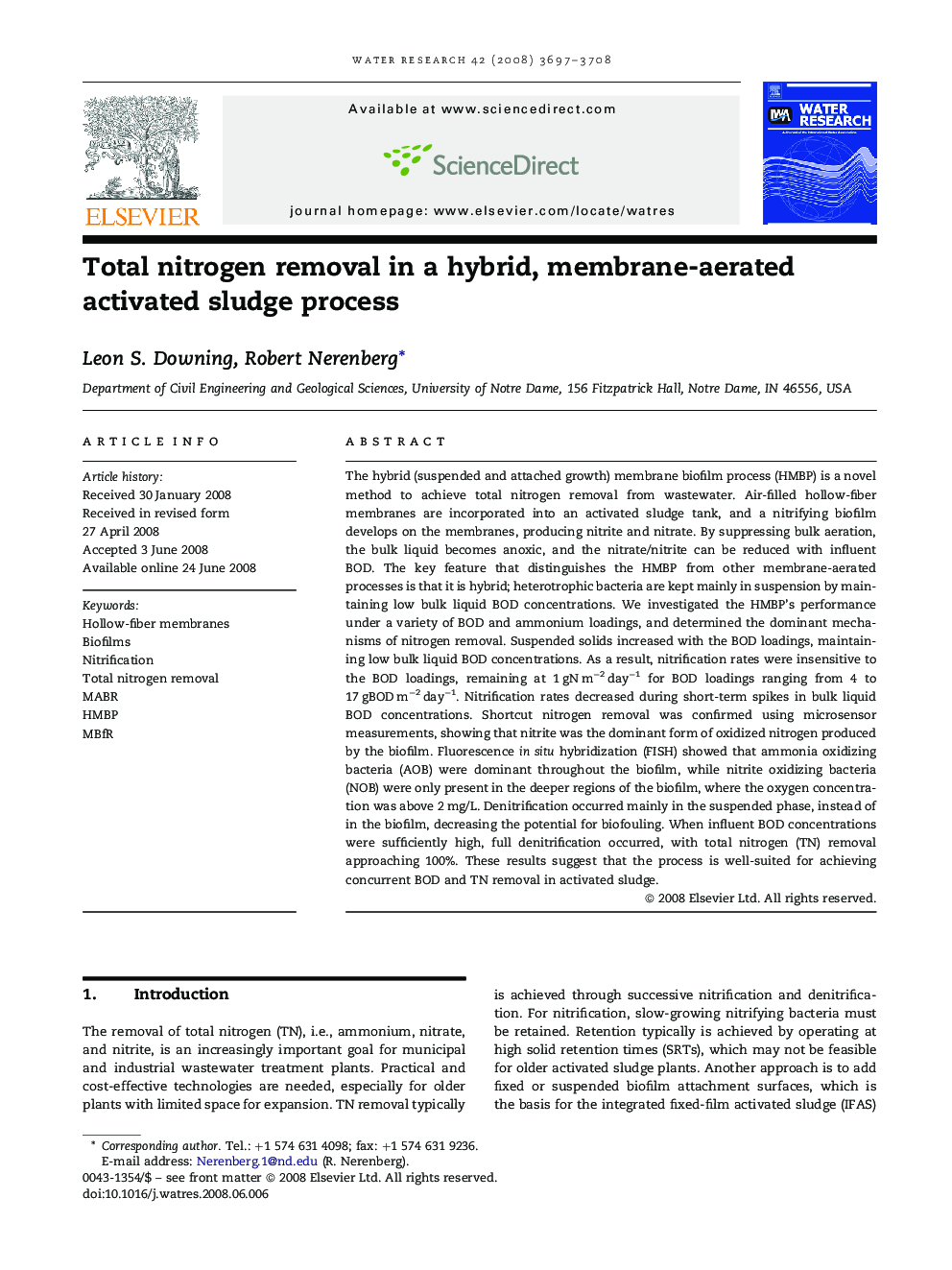| کد مقاله | کد نشریه | سال انتشار | مقاله انگلیسی | نسخه تمام متن |
|---|---|---|---|---|
| 4485961 | 1316971 | 2008 | 12 صفحه PDF | دانلود رایگان |

The hybrid (suspended and attached growth) membrane biofilm process (HMBP) is a novel method to achieve total nitrogen removal from wastewater. Air-filled hollow-fiber membranes are incorporated into an activated sludge tank, and a nitrifying biofilm develops on the membranes, producing nitrite and nitrate. By suppressing bulk aeration, the bulk liquid becomes anoxic, and the nitrate/nitrite can be reduced with influent BOD. The key feature that distinguishes the HMBP from other membrane-aerated processes is that it is hybrid; heterotrophic bacteria are kept mainly in suspension by maintaining low bulk liquid BOD concentrations. We investigated the HMBP's performance under a variety of BOD and ammonium loadings, and determined the dominant mechanisms of nitrogen removal. Suspended solids increased with the BOD loadings, maintaining low bulk liquid BOD concentrations. As a result, nitrification rates were insensitive to the BOD loadings, remaining at 1 gN m−2 day−1 for BOD loadings ranging from 4 to 17 gBOD m−2 day−1. Nitrification rates decreased during short-term spikes in bulk liquid BOD concentrations. Shortcut nitrogen removal was confirmed using microsensor measurements, showing that nitrite was the dominant form of oxidized nitrogen produced by the biofilm. Fluorescence in situ hybridization (FISH) showed that ammonia oxidizing bacteria (AOB) were dominant throughout the biofilm, while nitrite oxidizing bacteria (NOB) were only present in the deeper regions of the biofilm, where the oxygen concentration was above 2 mg/L. Denitrification occurred mainly in the suspended phase, instead of in the biofilm, decreasing the potential for biofouling. When influent BOD concentrations were sufficiently high, full denitrification occurred, with total nitrogen (TN) removal approaching 100%. These results suggest that the process is well-suited for achieving concurrent BOD and TN removal in activated sludge.
Journal: Water Research - Volume 42, Issue 14, August 2008, Pages 3697–3708